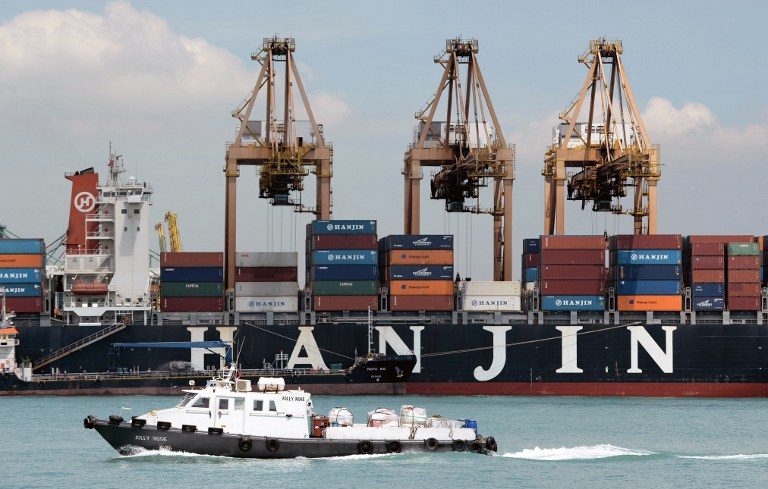SUMMARY
This is AI generated summarization, which may have errors. For context, always refer to the full article.

SINGAPORE – The problems that sank South Korea’s Hanjin Shipping this week could be just the tip of the iceberg, analysts say, with the long-running global economic downturn having left the industry drowning in excess capacity.
With growth refusing to budge and consumer demand still slack, the world’s freight carriers have more ships than they can fill – a quarter of cargo space lies empty.
That has led to fierce price cuts and cut-throat competition, badly impacting the bottom lines of some of the giants of the seas.
Those problems played out this week when Hanjin, the world’s seventh largest shipping firm, filed for bankruptcy in Seoul, seeking court protection after creditors rejected its latest plan for dealing with its hulking $5.37 billion of debt.
A third of its fleet is either stuck in port or unable to dock, with port authorities fretting the company will not be able to pay its bills.
Analysts say Hanjin’s cashflow management has been problematic, but caution that shipping companies worldwide are vulnerable to the same conditions of oversupply and low trade volumes.
Nearly 80% of goods and commodities traded globally are transported by sea.
The industry had boomed as China’s manufacturing and export-heavy economy mushroomed over recent decades, moving a record 9.6 billion tons of cargo in 2008, according to Richard Clayton, maritime and trade principal analyst at IHS global business consultancy.
Those volumes plummeted when the global financial crisis struck.
Recession is nothing new for an industry used to riding out the occasional economic storm, but the length and depth of the downturn was different this time, said Clayton.
“The thing about shipping is that you order to anticipate an upturn,” he said, adding it could take up to five years to take delivery of a vessel after ordering it.
“We saw a rise in orders in 2010 and 2012 but there has been no (economic) upturn,” he said.
“China’s economy is down, and too many ships have been delivered. This has led to competition within the industry, which drives prices down.”
Beijing’s attempt to pivot away from exports towards domestic demand is also impacting the industry, he said.
Clayton estimated that some 25 percent of global container capacity now sits empty.
Industry consolidation
Shippers desperate to cover at least some of their costs have slashed prices – the cost of chartering a container vessel has plunged from 2008 highs of $200,000 a day to just under $5,000 a day, according to a July report by brokers JLT Speciality.
And those kinds of prices are hurting – in an April report, Drewry Maritime Equity Research estimated the industry will lose at least $6.0 billion this year.
This week France’s CMA CGM, the industry’s third largest player, behind APM-Maersk and Mediterranean, said it had lost $128 million in the second quarter alone.
The company is “experiencing a market environment that remains difficult, with excessively low freight rates weighing on our revenue and margins”, said group vice-chairman Rodolphe Saadé.
Losses like that are driving a round of mergers, said Rahul Kapoor, director of Drewry Financial Research Services in Singapore.
“We are seeing consolidation happening in the industry,” he told Agence France-Presse.
Successful partnerships are resulting in companies that are “much bigger and stronger in terms of balance sheets”.
Recent moves include CMA CGM’s purchase of Singapore’s Neptune Orient Lines (NOL), and a June marriage between Hapag-Lloyd and United Arab Shipping Co.
“I think (Hanjin) expanded after the global financial crisis, expecting the market to recover and the cash flows to come,” he said.
“The problem was the market just did not come back. They were waiting for the market recovery so that they could retire their short-term debt, long-term debt. That was their major undoing.”
For Kapoor, Hanjin is the exception in the industry, not the rule.
“They are all vulnerable to the underlying markets which remain weak, but there is no further bankruptcy that is threatening any other company in the market.” – Rappler.com
Add a comment
How does this make you feel?
There are no comments yet. Add your comment to start the conversation.